A Look Inside Modern Methods of Antiseptic Wound Treatment
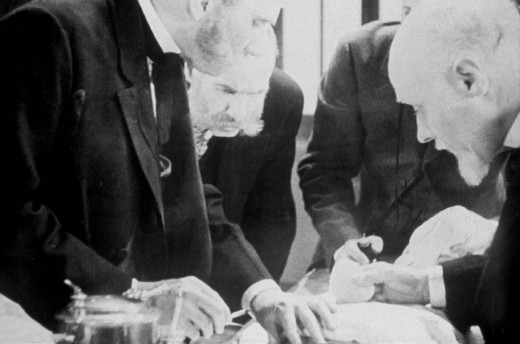
Although it seems hard to believe today, as recently as the late 1800s the concept that surgery should be sterile was still facing an uphill battle. Some people found it hard to believe that invisible “germs” (as they were called) were causing the high rates of post-surgical infections. Others (some surgeons included) still believed that infections weren’t caused by germs at all, which inclined them to view sterile surgery as an unnecessary affectation. Surgeons who did want to try antiseptic surgery often lacked the resources and the technical knowledge. What was needed was a how-to manual that also laid out the case for antiseptic surgery…and that’s where Modern Methods of Antiseptic Wound Treatment came in.
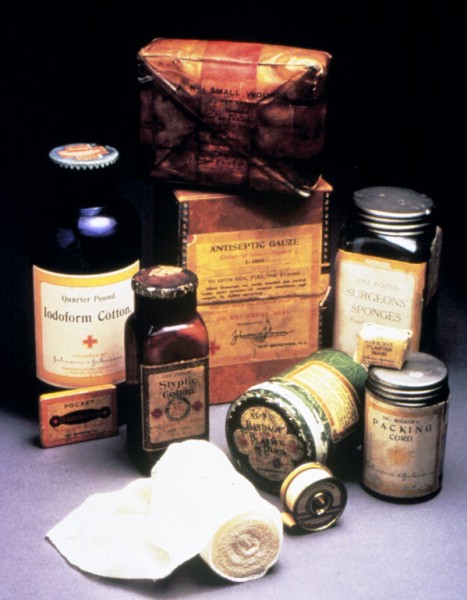
Johnson & Johnson was making mass-produced sterile surgical dressings and sterile sutures, which gave surgeons ready-to-use sterile surgical products for the first time. But antiseptic surgery was still not included in many medical textbooks of the day, and many surgeons were slow to adopt it. So Company founder Robert Wood Johnson and his brothers realized that it wouldn’t be enough to simply mass produce the sterile surgical products. They also would need to publish a manual.
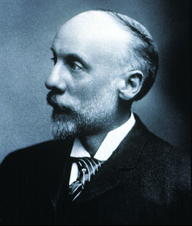
Fortunately for R.W. Johnson -- and for surgery patients everywhere -- the answer was just a few blocks down the street from Johnson & Johnson in New Brunswick, New Jersey: pharmacist Fred Kilmer, who was a scientist, a talented writer and a believer in Lister’s antiseptic surgery methods. Johnson and Kilmer had already struck up a friendship, so it was natural for Johnson to ask him to research and write a best practices manual on antiseptic surgery. Kilmer wrote to the leading practitioners of the day, asking them to contribute articles.
But before we take a look inside that manual, we have to go back to the 1876 Centennial Exhibition in Philadelphia, Pennsylvania.
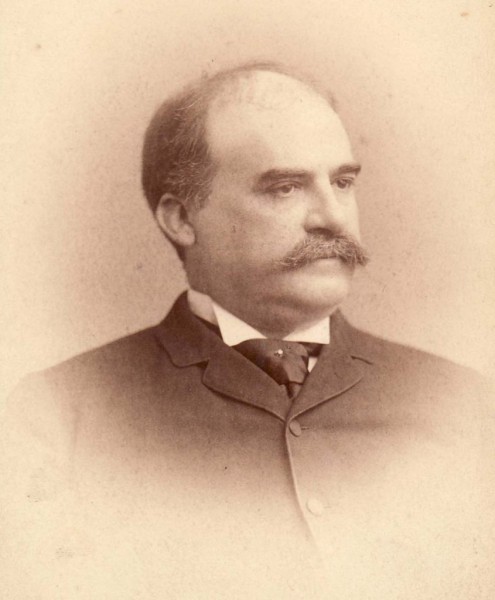
Alert Kilmer House readers will remember that as the world’s fair at which Robert Wood Johnson attended a lecture by Sir Joseph Lister, leading to the inspiration to form Johnson & Johnson.
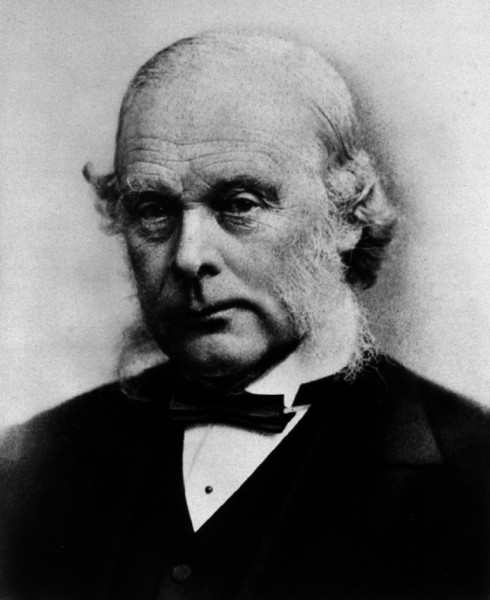
Lister spoke at the International Medical Congress, which was part of the Centennial Exposition. He talked for three hours explaining his antiseptic surgery system, the relationship between bacteria and infection, and the ways in which antisepsis could prevent surgical infections, and he underscored his lecture by giving a demonstration of antiseptic surgery. Lister’s audience was dotted with skeptics, many of them prominent surgeons, but medicinal plaster maker Robert Wood Johnson – whose older brothers fought in the Union Army during the Civil War, with its brutal battlefield medical conditions -- listened attentively and knew that he had a business opportunity to make mass produced, ready to use sterile surgical products to help promote the adoption of Lister’s methods and save lives in hospitals. According to this really interesting article about Lister from the 2007 edition of The Journal of Urology, the president of the International Medical Congress who had extended the invitation to Lister concluded that “‘Little, if any faith, is placed by any enlightened or experienced surgeon on this side of the Atlantic in the so-called (antiseptic) treatment of Professor Lister.’" [Ignorance is Bliss: The Listerian Revolution and Education of American Surgeons, by Harry W. Herr, The Journal of Urology, at this site, 2007, p. 458]
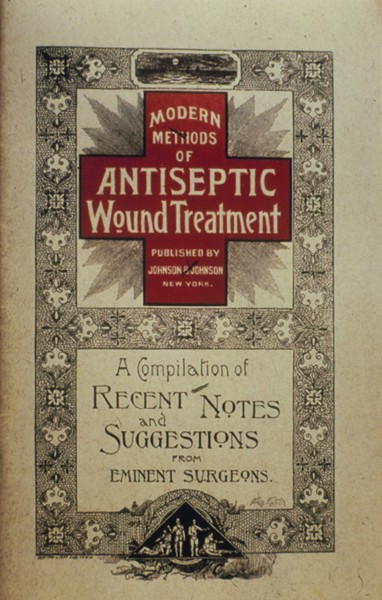
So in 1888, Johnson & Johnson published Modern Methods of Antiseptic Wound Treatment, and gave it away for free to the medical profession. The booklet went through a number of printings and soon became one of the leading treatises on how to do antiseptic surgery. The combination of the Company’s ready-to- use, mass produced sterile surgical products plus the manual put antiseptic surgery within the reach of most doctors and hospitals for the first time. Let’s take a look inside Modern Methods.
The first section started by saying:
“The collection and publication of the matter contained in these pages are due to suggestions recently made by an eminent surgeon, to the following effect: 1st. That the aseptic and antiseptic methods in surgery being of comparatively recent origin, most of the text books do not contain concise information concerning the details of their application. 2d. that the publication of such information, together with some of the special methods practiced by our leading surgeons, and the recent improvements in the general method, due to sanitary science, would lead to a fuller appreciation of the value of asepsis and antisepsis in general practice, and prove interesting to the profession at large.” [Modern Methods of Antiseptic Would Treatment, preface, Johnson & Johnson 1888.]
Fred Kilmer then laid out the arguments in favor of antiseptic surgery, starting with examples from as far back as Ancient Rome. He cited the work of researchers who had added to the body of scientific knowledge regarding the causes of infection in wound treatment and surgery, concluding with Pasteur, Lister and Robert Koch, one of the founders of microbiology. The next section, Is the Antiseptic Method a Success?, presented hard numerical data that showed antiseptic surgery greatly increasing patient survival rates. A followup section discussed updates to Lister’s methods and new developments in antiseptic surgery.
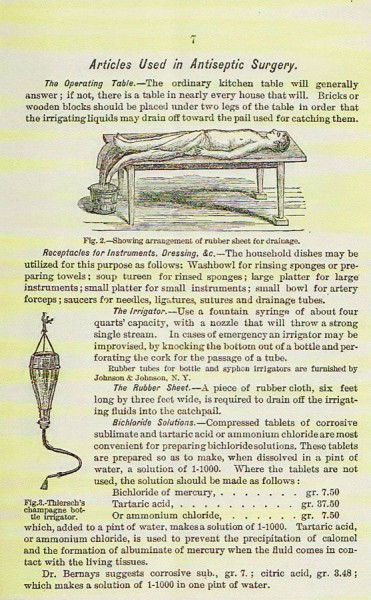
One chapter, called Articles Used in Antiseptic Surgery, provided a detailed rundown of everything the surgeon would need to perform antiseptic surgery – such as methods of sterilization, surgical instruments, drapes, absorbent cotton, surgical gauze and dressings, sterile sutures, sponges, soap and a nail brush (for cleaning the surgeon’s hands), and much more. This section gave precise instructions -- like a recipe in a cookbook -- for preparing disinfecting solutions for surgical instruments. It also detailed the way in which a kitchen table could stand in for an operating table if necessary, and it discussed how to use ordinary household bowls and dishes (sterilized, of course) to hold surgical instruments and dressings during an operation. The inclusion of those items on this very comprehensive list is a reminder that, in 1888, many surgeons did not have access to resources such as a hospital operating room...and Fred Kilmer wanted to make sure the information could be of use to them as well.
A section on Important General Directions and Precautions urged surgeons and their assistants to have all instruments and dressings sterilized and prepared before they started an operation, and to wear clean white coats instead of the traditional surgeon’s never-laundered black frock coat. The manual also stated that if anything fell to the floor during surgery, it should not be used, and if a surgical instrument came into contact with an unsterilized surface, it must be re-sterilized [Modern Methods, p. 12]. While this seems basic today, in 1888 it was new territory.
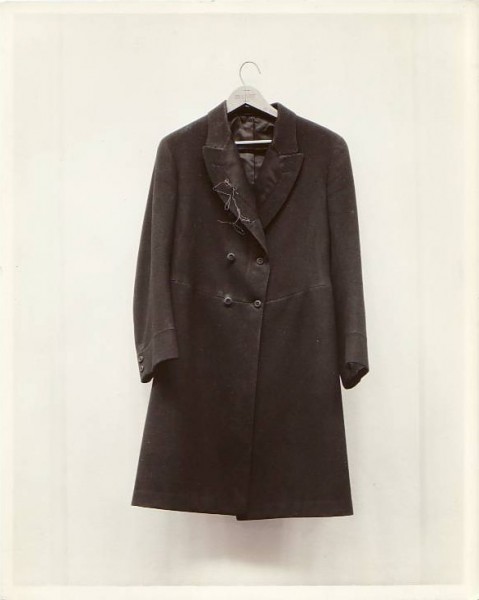
The remainder of Modern Methods of Antiseptic Wound Treatment consisted of case studies in a wide variety of surgical subjects by the leading antiseptic surgeons of the day. Contributors included Dr. Hayes Agnew, Professor of Clinical Surgery at the University of Pennsylvania; Professor Lewis A. Stimson at Bellevue Hospital; Thomas Morton, from the Pennsylvania and Orthopaedic Hospitals in Philadelphia; and Dr. Hunter McGuire from St. Luke’s Hospital in Richmond, Virginia. The back pages of Modern Methods contained a comprehensive price list of Johnson & Johnson sterile surgical dressings, drapes, gauzes, surgical sponges, surgical adhesive tape, and sterile sutures that surgeons could order, giving them the supplies as well as the knowledge they would need to take sterile surgery forward.
If anyone’s interested in reading Modern Methods of Antiseptic Wound Treatment, you can read a digital version of the copy belonging to the Columbia University library, at archive.org, here. And if anyone's interested in looking at Sir Joseph Lister's book On the Antiseptic Principle of the Practice of Surgery, you can take a look online, here.

FASCINATING!! It's wonderful to learn how it all began, and realize how J&J is responsible for making anti-septic surgical conditions the norm, instead of the exception. Bravo!!
Interesting to cross reference the J. of Urology article and see that one of the surgeons who did not practice antiseptic procedures in the botched treatment of President Garfield in 1881 is the same Dr. Hayes Agnew who contributed to Modern Methods in 1888. Good to know that at least one preeminent surgeon of those days finally changed his ways, probably thanks at least in part to the message J&J was delivering.